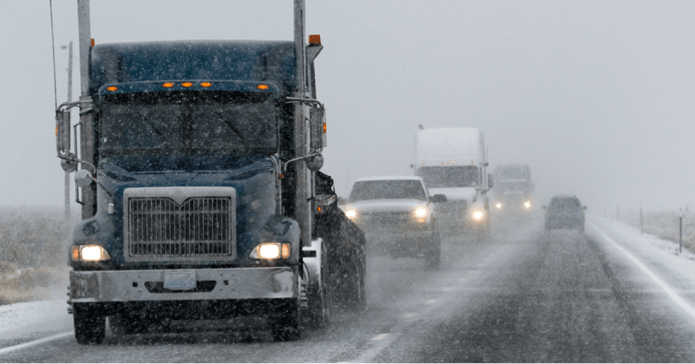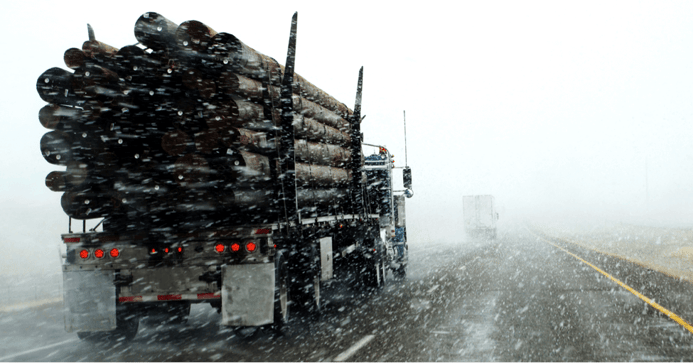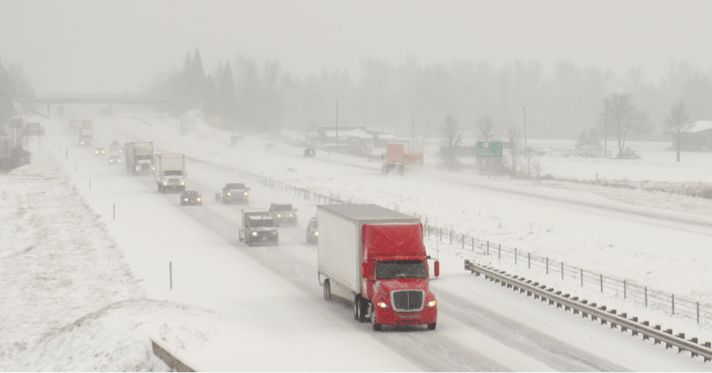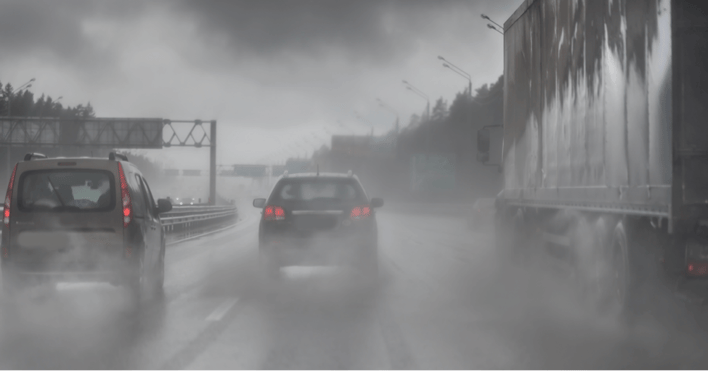With the temperature plummeting, the conditions of Kentucky and Tennessee roadways are going to worsen with freezing rain and snow. Not only does this make it more difficult and dangerous to navigate the roadways in general, but it can also make sharing the road with an eighteen-wheeler more treacherous. An incredible 10 percent of all highway fatalities are the result of a crash involving a large tractor-trailer truck.
Continue reading for the four most effective ways to successfully avoid accidents with semis this winter season.

Observe Tire Spray and Watch for Black Ice
Passing a semi can already be a little nerve-wracking on a sunny summer day. When you factor in the wintry spray and slush that can splash across your windshield from tractor trailers during inclement weather, it can be even riskier to pass. Visibility can quickly become an issue if your windshield wiper blades need replacing or are set at a lower speed. You can help yourself by always ensuring your wiper blades have been recently replaced and are running on their highest setting when you decide to pass during a winter storm. This will significantly decrease your chances of spinning out and harming yourself or others.
PRO TIP :: Along with wintry spray, black ice can also be an issue during the wintertime. Be alert when driving on multiple-lane roadways when it’s slick out, as icy patches aren’t immediately visible and can sneak up on you.
Resist the Temptation; Don’t Pass on the Right
It might be tempting when eighteen-wheeler trucks linger in the passing lane for longer than usual, but don’t pass them on the right. When you factor in how tired or busy some truck drivers can get, you never know when big rigs might drift or swerve unpredictably into a neighboring lane. The biggest blind spot is on the right side of the truck, and truck drivers often can’t see the immediate cars around them.
Good rule of thumb is if you can’t see the truck’s mirrors, they can’t see you. In an ideal world, every motorist always uses a turn signal and checks their mirrors before changing lanes, but during a snow or ice storm visibility can be a game changer. It’s always best to hang back and let traffic clear before passing in the appropriate lane.
Give them Room to Stop and Respect their Space
It can take an eighteen-wheeler a really long time to slow down and come to a complete stop, nearly the length of two football fields! If for whatever reason you have to slam on the breaks and there is not enough separation between you and a trailing semi, they may not have enough time to slow down to prevent a life-threatening accident. This is even more exaggerated during the winter months when hazardous road conditions and limited visibility may cause drivers to react erratically. Use caution when switching lanes in front of a big rig, and always be sure to leave a safe number of car lengths between you and an eighteen wheeler.
PRO TIP :: Yes, drafting has been proven to improve fuel efficiency by 40 percent, however, the increased risk to you, truck drivers, and other motorists around you is NOT worth it. Trucks have blind spots, and drivers who draft behind them occupy these spots. So, when trucks make sudden stops, a drafting vehicle might not have time to stop before a collision.
Slow Down
Seriously. This might seem like overkill to state blatantly, but a large percentage of accidents can be prevented by motorists observing the rules of the road and driving cautiously. Slowing down when you’re driving behind or next to an eighteen-wheeler can make all the difference when narrowly avoiding a collision.
During the winter months, frozen rain, wintry mixes, and snow make driving with caution even more important. You certainly don’t want to find yourself in a situation where you’re speeding by an eighteen-wheeler and your car begin to hydroplane or lose control. Be careful out there!





